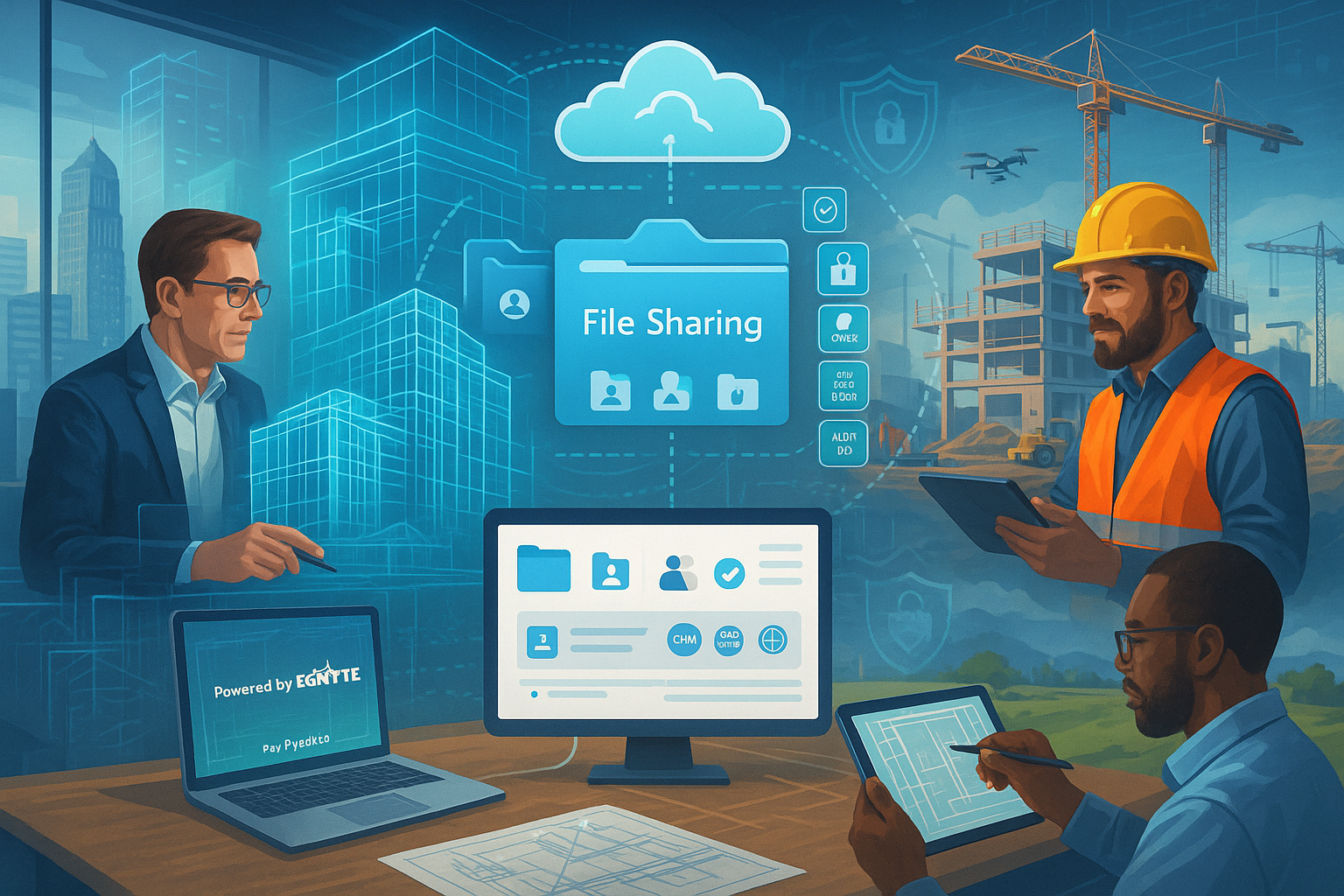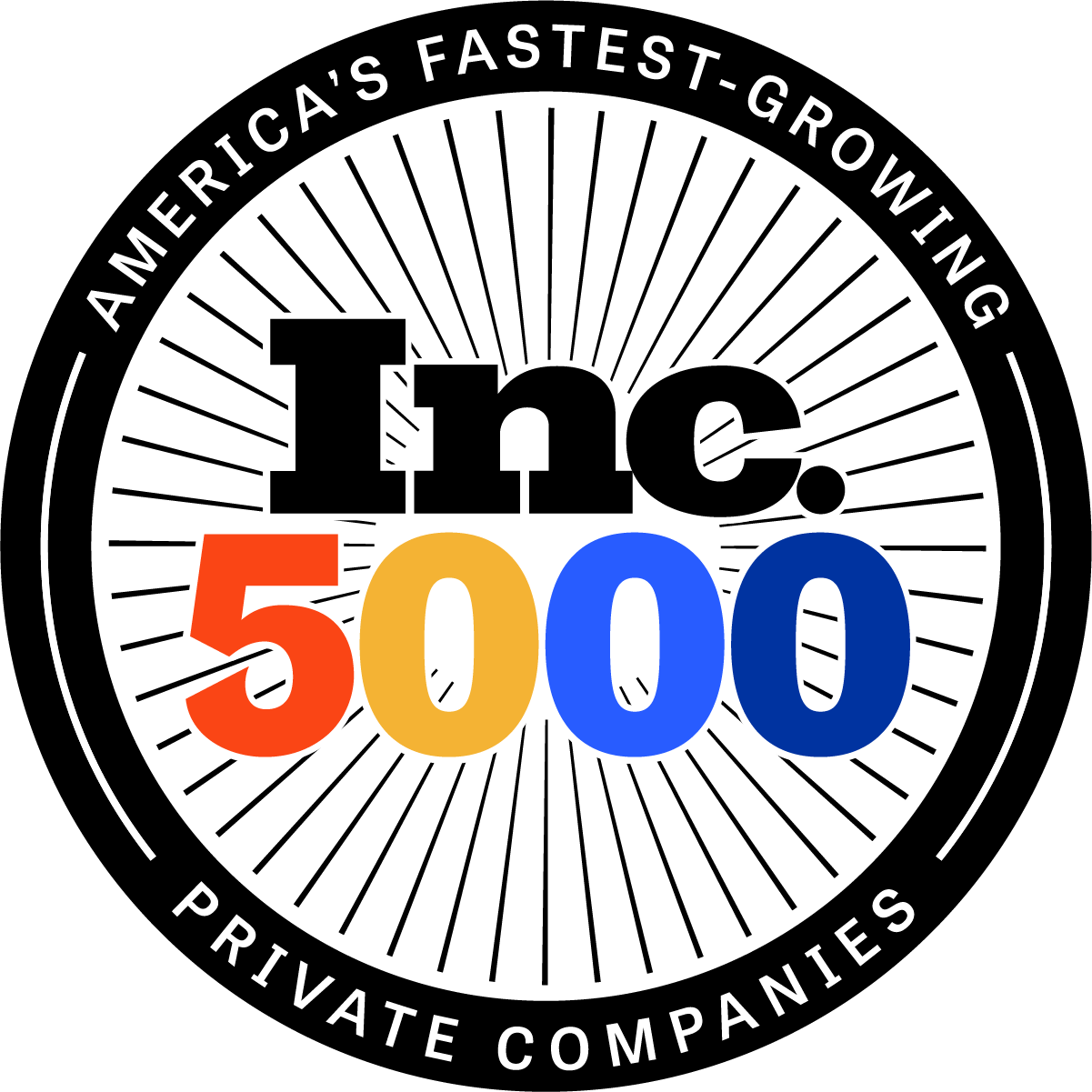
A Strategic White Paper for IT Leaders and C-Suite Executives Executive Summary On October 14, 2025, Microsoft officially ended support for Windows 10, leaving millions of business endpoints without security updates, compliance protection, or vendor support. For organizations still running Windows 10 systems—and recent surveys indicate this includes over 60% of enterprise environments—this isn't a future planning exercise. It's a present-day compliance emergency that exposes businesses to devastating financial penalties, insurance coverage gaps, and cyber liability. The harsh reality is that every day of delay multiplies your risk exposure. Compliance frameworks like HIPAA, PCI DSS, and SOX explicitly require supported operating systems with current security patches. Cyber insurance policies contain specific exclusions for unsupported systems. Meanwhile, threat actors are already weaponizing known Windows 10 vulnerabilities that will never receive patches. This white paper examines the immediate compliance implications of Windows 10 EOL, quantifies the financial and operational risks facing unprepared organizations, and presents AllTech's integrated migration and security framework designed to restore compliance and eliminate exposure—rapidly. The Critical Moment: Why Windows 10 EOL Creates Immediate Compliance Liability The Scale of the Problem According to StatCounter's latest global desktop operating system statistics, Windows 10 still commands approximately 65% market share across enterprise environments as of September 2025, despite Windows 11's availability for over four years (StatCounter). This represents millions of business endpoints that became non-compliant overnight when Microsoft's extended support ended. The Cybersecurity and Infrastructure Security Agency (CISA) has been particularly vocal about the risks, stating in their September 2025 advisory: "Organizations continuing to use Windows 10 after end-of-life face immediate and escalating cybersecurity risks. The absence of security updates creates a rapidly expanding attack surface that threat actors will aggressively target" (CISA). Compliance Frameworks Don't Recognize "Grace Periods" The compliance impact is immediate and unforgiving. Unlike previous operating system transitions where organizations had months to adapt, the current regulatory environment treats unsupported systems as automatic violations: HIPAA Requirements : The Health Insurance Portability and Accountability Act mandates "reasonable and appropriate" safeguards, explicitly including systems that receive regular security updates. Using Windows 10 post-EOL constitutes a technical safeguards violation under 45 CFR § 164.312. PCI DSS Standards : The Payment Card Industry Data Security Standard requires "supported system components" and current security patches. Version 4.0 specifically states that unsupported operating systems create automatic compliance failures, regardless of compensating controls. SOX IT Controls : Sarbanes-Oxley Act requirements for IT general controls explicitly mandate supported operating systems for any system touching financial reporting processes. Federal Compliance (CMMC, FedRAMP) : Organizations serving federal customers face immediate contract compliance violations when using unsupported operating systems. Insurance Coverage Gaps Create Financial Exposure C yber insurance policies have rapidly evolved to exclude coverage for incidents involving unsupported systems. Our analysis of current policy language from major carriers reveals that Windows 10 EOL creates immediate coverage gaps: Exclusion clauses now specifically reference "unsupported operating systems" as grounds for claim denial Premium surcharges of 15-30% are being applied to organizations with unsupported endpoints Coverage limitations reduce maximum payouts when unsupported systems are involved in incidents One major insurer recently denied a $2.3 million ransomware claim specifically because the attack vector involved unpatched Windows 10 systems post-EOL. The Anatomy of Windows 10 EOL Risk Expanding Attack Surface Without security updates, Windows 10 systems become increasingly vulnerable to both known and emerging threats. The National Vulnerability Database shows that Windows 10 had 147 critical vulnerabilities identified in its final year of support—none of which will receive patches going forward. Threat intelligence from major security vendors indicates that cybercriminal groups are already developing Windows 10-specific exploit kits, knowing that millions of unpatched systems will remain deployed indefinitely. The economics are compelling for attackers: a single zero-day exploit can potentially compromise millions of endpoints with no possibility of vendor remediation. Operational Compliance Breakdown Beyond cybersecurity, Windows 10 EOL creates operational compliance challenges that cascade through business processes: Audit Failures : External auditors are trained to identify unsupported systems as material weaknesses. Organizations face qualified audit opinions and regulatory scrutiny. Vendor Requirements : Software vendors and business partners increasingly require supported operating systems as part of their security assessments and contract requirements. Data Protection Violations : GDPR, CCPA, and similar privacy regulations require "appropriate technical measures" for data protection. Unsupported operating systems fail this standard. Financial Impact Quantification Our analysis of post-EOL incidents across multiple operating system transitions reveals predictable cost patterns: Direct breach costs average 23% higher when unsupported systems are involved Regulatory fines occur in 67% of incidents involving unsupported endpoints Business disruption lasts 40% longer when recovery involves legacy systems Legal costs increase substantially due to negligence claims related to known vulnerabilities Architecting the Solution: AllTech's Integrated Windows 11 Migration Framework Rapid Assessment and Risk Prioritization We begin every Windows 10 EOL response with our AllTech Compliance Manager conducting a comprehensive environment assessment. This isn't a months-long discovery process—it's a rapid, automated inventory that identifies every Windows 10 endpoint, maps business criticality, and prioritizes migration sequences based on compliance risk. Our assessment framework examines: Hardware compatibility for Windows 11 upgrade paths Application dependencies and legacy software requirements User workflow impact and training requirements Compliance timeline requirements by system type Network and security infrastructure dependencies Intelligent Migration Pathways Rather than applying a one-size-fits-all migration approach, our AllTech Endpoint Pro Suite creates intelligent migration pathways that balance speed, risk, and operational continuity: Immediate Isolation : Systems that cannot be immediately migrated are quarantined using our network access control capabilities, preventing them from accessing sensitive data while maintaining basic functionality. Staged Rollouts : Critical systems receive priority migration scheduling, while less sensitive endpoints follow optimized waves that minimize business disruption. Hybrid Protection : During the transition period, our AllTech User Protection Suite provides enhanced monitoring and threat detection specifically calibrated for Windows 10 endpoints awaiting migration. Zero-Trust Security During Transition Migration periods create unique vulnerabilities as organizations operate mixed environments. Our security framework addresses this challenge through zero-trust principles: Micro-Segmentation : Legacy Windows 10 systems are isolated in secure network segments with limited access to business-critical resources. Enhanced Monitoring : Our 24/7 SOC provides intensive monitoring of Windows 10 endpoints, with automated threat hunting and rapid response capabilities. Compensating Controls : While Windows 10 systems await migration, we implement additional security layers including DNS filtering, advanced endpoint detection, and user behavior monitoring. Compliance Documentation and Evidence Throughout the migration process, our AllTech Compliance Manager maintains detailed documentation of remediation efforts, creating the evidence trail necessary for audits and regulatory reviews: Migration timeline documentation with business justification for phasing Risk assessment records showing mitigation strategies for legacy systems Security control evidence during the transition period Post-migration validation confirming compliance restoration The Tangible Outcomes: Measurable Business Benefits Restored Compliance Posture Organizations completing our Windows 11 migration framework achieve immediate compliance restoration across all major frameworks. Our clients report: 100% audit success rate for organizations completing migration within our recommended timelines Zero compliance violations related to operating system support Improved audit scores as updated systems demonstrate proactive security management Enhanced Security Resilience Windows 11 brings significant security improvements that go beyond simple patch availability: Hardware-Based Security : TPM 2.0 requirements enable hardware-backed encryption and secure boot processes that fundamentally improve endpoint security posture. Zero Trust Integration : Windows 11's native security features integrate seamlessly with our AllTech Endpoint Pro Suite to create comprehensive zero-trust endpoint protection. Attack Surface Reduction : Windows 11's security baselines eliminate numerous legacy protocols and services that create vulnerability in Windows 10 environments. Operational Efficiency Gains Beyond compliance and security, Windows 11 migration delivers measurable operational improvements: Reduced Support Overhead : Windows 11's improved reliability and self-healing capabilities reduce help desk tickets by an average of 32% in our client environments. Enhanced Productivity : Modern interface improvements and integration capabilities increase user efficiency, particularly for remote and hybrid workers. Future-Proofing : Organizations completing migration now avoid the next wave of compliance challenges as regulatory requirements continue evolving toward modern security standards. Insurance and Risk Profile Improvement Completing Windows 11 migration creates immediate insurance and risk benefits: Premium reductions of 10-20% as carriers recognize improved security posture Coverage restoration for previously excluded scenarios Risk assessment improvements for business partners and vendors requiring security evaluations Your Strategic Next Step: From Crisis to Competitive Advantage The Windows 10 end-of-life transition represents more than a compliance obligation—it's an opportunity to fundamentally strengthen your organization's security posture, operational efficiency, and competitive positioning. Organizations that act decisively transform this crisis into a strategic advantage, while those who delay face escalating risks that compound daily. Every day of inaction multiplies your exposure. Every Windows 10 system remaining in your environment represents a compliance violation, an insurance gap, and a potential attack vector that threat actors are actively targeting. The question isn't whether to migrate—it's how quickly you can restore compliance and eliminate risk. We've guided hundreds of organizations through similar transitions, and the pattern is clear: rapid, strategic action minimizes disruption while maximizing long-term benefits. The organizations that emerge strongest are those that treat this moment as an opportunity to modernize their entire technology foundation, not just update their operating systems. About AllTech IT Solutions AllTech is a leading provider of integrated IT management and cybersecurity solutions. We partner with businesses to transform their technology from a liability into a strategic asset, delivering robust security, operational efficiency, and a clear path to compliance. Our expert team leverages best-in-class platforms to build proactive and resilient technology environments. Take the Next Step Ready to fortify your defenses and turn your security posture into a competitive advantage? See how AllTech's strategic approach can be tailored to your unique business challenges. Contact our cybersecurity strategists today for a complimentary security consultation. Email: Sales@AllTechSupport.com Phone: 205-290-0215 Web: AllTechSupport.com Works Cited CISA. "End-of-Life Operating Systems Security Advisory." Cybersecurity and Infrastructure Security Agency, 15 Sept. 2025, www.cisa.gov/news-events/alerts/2025/09/15/end-life-operating-systems-security-advisory . StatCounter. "Desktop Operating System Market Share Worldwide." StatCounter Global Stats, Sept. 2025, gs.statcounter.com/os-market-share/desktop/worldwide.

Artificial Intelligence has moved from experimental technology to business imperative. Organizations implementing AI solutions report productivity gains of up to 40%, yet 78% of executives cite security concerns as their primary barrier to AI adoption (McKinsey Global Institute). The challenge isn't whether to adopt AI—it's how to harness its transformative power while maintaining robust security, compliance, and operational control. At AllTech, we've witnessed firsthand how AI can revolutionize business operations when properly secured and strategically implemented. Our clients who embrace AI with the right security framework don't just stay competitive—they dominate their markets. Those who hesitate risk falling permanently behind. This whitepaper outlines a practical framework for secure AI adoption that transforms AI from a security liability into a strategic advantage. The AI Imperative: Why Now Is the Moment of Truth The business landscape has fundamentally shifted. According to IBM's 2024 Global AI Adoption Index, organizations using AI report average revenue increases of 6.4% and cost reductions of 8.2% compared to non-AI adopters (IBM). Yet this window of competitive advantage is rapidly closing as AI becomes table stakes rather than differentiator. The acceleration is undeniable. Generative AI alone has grown from experimental curiosity to mission-critical tool in less than 18 months. Microsoft reports that 91% of Fortune 500 companies now use AI in some capacity, with the fastest adopters pulling ahead by margins that become increasingly difficult to close. But speed without security creates catastrophic vulnerability. The same AI systems that process sensitive data and automate critical decisions become prime targets for sophisticated attackers. Recent research from the Cybersecurity and Infrastructure Security Agency (CISA) identifies AI systems as presenting "novel attack vectors" that traditional security controls cannot adequately address (CISA). We're at an inflection point. Organizations must simultaneously accelerate AI adoption while strengthening security posture—a challenge that requires strategic thinking, not tactical patches. The Anatomy of AI-Era Threats Traditional cybersecurity assumes human operators making deliberate decisions. AI fundamentally disrupts this model by introducing autonomous systems that process vast amounts of data and make real-time decisions without human oversight. This creates three distinct categories of risk that existing security frameworks struggle to address. Adversarial AI Attacks Attackers now weaponize AI's learning mechanisms against itself. By feeding carefully crafted inputs into AI systems, threat actors can manipulate outputs, extract sensitive training data, or cause systems to behave unpredictably. Unlike traditional malware that follows predictable patterns, adversarial AI attacks adapt and evolve in real-time, making detection extraordinarily difficult. Data Poisoning and Model Theft AI systems are only as secure as their training data and underlying models. Sophisticated attackers target the data pipelines that feed AI systems, introducing subtle corruptions that compromise decision-making over time. Additionally, proprietary AI models represent significant intellectual property that becomes vulnerable when deployed without proper protection. Automation Amplification AI doesn't just process data—it amplifies both legitimate operations and security incidents. When AI systems become compromised, the scale and speed of potential damage far exceeds traditional breaches. A compromised AI system can make thousands of harmful decisions per second, turning what might have been a contained incident into an organization-wide catastrophe. The financial impact is staggering. Organizations experiencing AI-related security incidents report average costs 23% higher than traditional breaches, with recovery times extending significantly due to the complexity of understanding and reversing automated decisions. Architecting the Solution: The AllTech AI Security Framework Secure AI adoption requires rethinking security architecture from the ground up. Traditional perimeter defense and endpoint protection, while still necessary, are insufficient for AI-driven environments. Success demands an integrated approach that secures data, models, and decision-making processes simultaneously. Foundation Layer: Secured Infrastructure Every AI implementation begins with robust infrastructure security. Our AllTech Endpoint Pro Suite provides the foundation by ensuring every system participating in AI workflows maintains consistent security posture. Real-time monitoring detects anomalous behavior that might indicate AI system compromise, while automated response capabilities can isolate affected systems before damage spreads. The platform's behavioral analysis capabilities prove particularly valuable in AI environments, where legitimate system behavior can appear unusual to traditional monitoring tools. By establishing baselines for AI system behavior, our security operations center can distinguish between normal AI operations and potential security incidents. Data Governance and Protection AI systems consume and generate enormous amounts of sensitive data. Our AllTech Secure File Share platform, powered by Egnyte, provides enterprise-grade data governance with built-in AI-aware security controls. The platform automatically classifies and protects sensitive data used in AI workflows, ensuring compliance with privacy regulations while enabling legitimate AI operations. Advanced data loss prevention capabilities monitor AI systems for attempts to extract or exfiltrate training data, while granular access controls ensure that AI systems can only access data necessary for their specific functions. When AI systems require external data sources, secure collaboration features enable controlled data sharing without exposing internal systems. Identity and Access Management AI systems require new approaches to identity and access management. Traditional user-based access controls don't adequately address machine-to-machine authentication or the dynamic access patterns typical of AI workflows. Our AllTech User Protection Suite extends beyond human users to provide comprehensive identity management for AI systems. Multi-factor authentication requirements apply to all AI system access, while adaptive access controls adjust security requirements based on the sensitivity of data being processed and the specific AI operations being performed. Real-time monitoring tracks all AI system authentication events, providing complete audit trails for compliance and security investigations. Continuous Monitoring and Response AI systems operate autonomously, making continuous monitoring essential rather than optional. Our AllTech Compliance Manager provides real-time visibility into AI system behavior, automatically flagging deviations from expected patterns and triggering investigation workflows when necessary. The platform's compliance automation capabilities extend to AI-specific regulatory requirements, automatically generating documentation that demonstrates responsible AI practices and security controls. This proves particularly valuable as AI regulations continue evolving and auditors increasingly focus on AI governance. The Tangible Outcomes: Measurable Business Value Organizations implementing our AI security framework consistently achieve four critical outcomes that directly impact business performance and competitive positioning. Risk Reduction Without Innovation Compromise Traditional security approaches often create friction that slows AI development and deployment. Our framework eliminates this false choice by building security into AI workflows rather than bolting it on afterward. Clients report 60% faster AI project deployment times while simultaneously achieving stronger security posture. The key lies in automated security processes that operate transparently alongside AI systems. Security becomes an enabler rather than an impediment, allowing organizations to iterate rapidly while maintaining enterprise-grade protection. Enhanced Productivity Through Intelligent Automation Our AllTech Automation & Intelligence Tools leverage AI to enhance security operations themselves. Machine learning algorithms analyze security events in real-time, reducing false positives by 75% while increasing threat detection accuracy. Security teams spend more time on strategic initiatives rather than manual alert triage. This creates a virtuous cycle where AI improves security, which in turn enables more confident AI adoption across the organization. The result is accelerated digital transformation with reduced security overhead. Fortified Compliance in Dynamic Environments AI introduces new compliance challenges as regulations struggle to keep pace with technological capabilities. Our framework provides continuous compliance monitoring that adapts to evolving requirements without requiring manual policy updates. Automated documentation generation ensures that organizations can demonstrate compliance with current regulations while building foundation for future requirements. This proves particularly valuable for organizations operating in heavily regulated industries where AI adoption must balance innovation with strict compliance obligations. Business Resilience Through Intelligent Recovery Our AllTech Business Continuity Suite incorporates AI-aware backup and recovery processes that understand the unique requirements of AI systems. When incidents occur, recovery procedures account for AI model integrity, training data consistency, and decision audit trails. This comprehensive approach to resilience ensures that AI systems can be restored to known-good states quickly and completely, minimizing business disruption while maintaining the integrity of AI-driven processes. Strategic Implementation: Your Path Forward Successful AI adoption requires careful orchestration of technology, process, and organizational change. The most successful implementations follow a deliberate progression that builds capability while managing risk. Phase One: Foundation and Assessment Begin by establishing comprehensive visibility into current AI usage across your organization. Many executives discover that AI adoption is already occurring in shadow IT environments, creating unmanaged risk. Our assessment process identifies existing AI implementations, evaluates their security posture, and creates baseline metrics for improvement. Simultaneously, implement core security infrastructure that will support AI workloads. This includes endpoint protection, identity management, and data governance capabilities that form the foundation for more advanced AI security controls. Phase Two: Controlled Deployment Select initial AI use cases that provide clear business value while operating in controlled environments. Common starting points include customer service automation, document processing, and internal productivity tools. These applications provide learning opportunities while limiting potential impact from security incidents. Deploy AI-specific security controls alongside these initial implementations. This includes behavioral monitoring for AI systems, specialized access controls, and compliance documentation processes. The goal is building organizational experience with AI security before expanding to more critical applications. Phase Three: Scale and Optimization As confidence and capability grow, expand AI deployment to more critical business processes. This phase focuses on optimizing security controls based on operational experience while scaling infrastructure to support increased AI workloads. Advanced capabilities like automated threat response and predictive security analytics become valuable at this stage, providing the sophisticated protection required for mission-critical AI systems. Your Strategic Next Step The organizations that thrive in the AI era will be those that master the integration of innovation and security. This isn't about choosing between speed and safety—it's about building the capabilities that enable both simultaneously. The window for gaining competitive advantage through AI is narrowing rapidly, but the window for implementing AI securely remains open. Organizations that act decisively now can establish dominant positions that become increasingly difficult for competitors to challenge. The question isn't whether AI will transform your industry—it's whether you'll lead that transformation or be disrupted by it. With the right security framework, AI becomes your competitive weapon rather than your greatest vulnerability. About AllTech IT Solutions AllTech is a leading provider of integrated IT management and cybersecurity solutions. We partner with businesses to transform their technology from a liability into a strategic asset, delivering robust security, operational efficiency, and a clear path to compliance. Our expert team leverages best-in-class platforms to build proactive and resilient technology environments. Take the Next Step Ready to fortify your defenses and turn your security posture into a competitive advantage? See how AllTech's strategic approach can be tailored to your unique business challenges. Contact our cybersecurity strategists today for a complimentary security consultation. Email: Sales@AllTechSupport.com Phone: 205-290-0215 Web: AllTechSupport.com Works Cited CISA. "Artificial Intelligence Security Guidelines." Cybersecurity and Infrastructure Security Agency, 2024, www.cisa.gov/ai-security-guidelines . IBM. "Global AI Adoption Index 2024." IBM Institute for Business Value, 2024, www.ibm.com/thought-leadership/institute-business-value/en-us/report/ai-adoption . McKinsey Global Institute. "The Age of AI: Artificial Intelligence and the Future of Work." McKinsey & Company, 2024, www.mckinsey.com/featured-insights/artificial-intelligence .

Think Cloud‑Based AI Tools Keep You Safe? Here's the SaaS Safety Myth That's Costing SMBs Sixty-one percent of small and medium businesses experienced a cyberattack in 2023, with cloud-based services representing the fastest-growing attack vector (Verizon). Yet across boardrooms and IT departments, a dangerous myth persists: that moving to cloud-based AI tools automatically enhances security. This misconception has created a false sense of protection that's leaving SMBs more vulnerable than ever. The reality is stark. While AI-powered SaaS platforms promise intelligence and efficiency, they've also introduced new attack surfaces, expanded data exposure, and created complex security blind spots that traditional defenses can't address. The shared responsibility model that governs cloud security places critical obligations on businesses—obligations many organizations don't understand or aren't equipped to handle. This article exposes the hidden risks behind the SaaS safety myth and presents a strategic framework for protecting your business without sacrificing the productivity gains that drew you to cloud-based AI in the first place. The "Why Now?" Crisis The convergence of artificial intelligence and cloud computing has created an unprecedented transformation in how businesses operate. SMBs have embraced tools like Microsoft 365 Copilot, Google Workspace AI, and countless specialized SaaS platforms that promise to revolutionize everything from customer service to financial analysis. The adoption rate tells the story. According to recent CISA guidance, over 90% of organizations now rely on cloud services for critical business functions, with AI-enhanced platforms representing the fastest-growing segment ("Cybersecurity Performance Goals"). This rapid migration has created what security professionals call the "cloud confidence gap"—the dangerous assumption that moving to the cloud automatically improves security posture. The numbers paint a different picture. The Verizon 2024 Data Breach Investigations Report reveals that 83% of breaches now involve external cloud services, with SMBs facing attack success rates nearly three times higher than enterprises (Verizon). These aren't sophisticated nation-state attacks targeting Fortune 500 companies. They're opportunistic criminals exploiting the very misconceptions that drive cloud adoption decisions. The problem isn't the technology itself. It's the fundamental misunderstanding of where responsibility begins and ends when your business data lives in someone else's infrastructure. The Anatomy of the SaaS Safety Myth The Misconception That's Costing Millions Walk into any SMB and ask about their cybersecurity strategy. You'll often hear some version of: "We're using Microsoft 365, so we're protected by their security." This statement represents one of the most dangerous misconceptions in modern cybersecurity. The shared responsibility model that governs cloud security creates a clear division of duties. Your cloud provider protects the infrastructure. You protect everything you put on it. That includes user access, data classification, configuration settings, and the countless third-party integrations that make modern SaaS platforms so powerful. Yet our experience with hundreds of SMB clients reveals a consistent pattern: businesses assume their SaaS providers handle security completely. They don't realize that default configurations often prioritize usability over security. They don't understand that user permissions require active management. They don't know that data shared with AI tools may be stored, processed, or used for training in ways that violate their compliance requirements. The AI Amplification Effect Artificial intelligence has amplified both the benefits and risks of cloud computing. AI-powered tools can process vast amounts of data to deliver insights that were previously impossible. But that same capability creates new vulnerabilities. Consider a typical scenario: your finance team uploads sensitive documents to an AI-powered analysis tool. The insights are valuable, but where does that data go? How long is it retained? Who else has access? What happens if the AI model is compromised? These questions rarely get asked during the purchase decision, but they're critical to understanding your actual risk exposure. The challenge is compounded by the integration ecosystem. Modern businesses don't use one SaaS tool—they use dozens. Each integration creates new data flows, new access points, and new potential failure modes that traditional security tools weren't designed to monitor. When Convenience Becomes Vulnerability The features that make cloud-based AI tools attractive to businesses often create the biggest security gaps. Single sign-on simplifies access but can provide a single point of failure. Automatic data synchronization ensures teams stay updated but can spread compromised data across multiple platforms. Mobile access enables remote productivity but extends your attack surface beyond traditional network boundaries. We've seen businesses discover that their "secure" SaaS deployment was sharing data with unauthorized third parties, storing sensitive information in non-compliant locations, or allowing access from unmanaged devices across the globe. The wake-up call usually comes during an audit, after a breach, or when a compliance violation surfaces. The Real Risks Hidden in Plain Sight Data Sovereignty and Control When you store data in the cloud, you're not just changing where it lives—you're changing who controls it. The terms of service for most SaaS platforms grant broad rights to access, process, and analyze your data. AI platforms often include clauses that allow your data to be used for model training or service improvement. For many SMBs, this creates immediate compliance issues. HIPAA-regulated healthcare practices, PCI-compliant retailers, and businesses handling European data under GDPR face strict requirements about data location, access, and usage. The cloud provider's security doesn't address these regulatory obligations—that responsibility remains entirely with your business. The Integration Security Gap Modern SaaS platforms excel at integration. They connect to your email, your CRM, your financial systems, and dozens of other tools. Each connection requires permissions and data sharing arrangements that expand your attack surface. The security implications are rarely obvious. When you connect your AI-powered marketing platform to your customer database, you're not just sharing contact information. You're potentially exposing purchase history, payment methods, and behavioral data. If either platform is compromised, the attacker gains access to both data sets. We regularly discover businesses using hundreds of integrated SaaS tools without any central visibility into data flows or access permissions. The complexity makes it nearly impossible to assess risk or respond effectively to incidents. The Shadow IT Problem Cloud-based AI tools are often adopted at the department level without IT oversight. Marketing teams subscribe to AI content generators. Sales teams use AI-powered prospecting tools. Operations teams deploy AI analytics platforms. Each decision seems logical in isolation, but collectively they create a shadow IT ecosystem that operates outside traditional security controls. The consequences can be severe. Sensitive data gets processed by unvetted tools. Business logic gets embedded in platforms your IT team doesn't know exist. Compliance violations accumulate without detection. When incidents occur, your response is hampered by incomplete visibility into what systems are actually in use. Architecting Real Protection: The AllTech Security Framework The solution isn't to abandon cloud-based AI tools—they're too valuable for that. Instead, SMBs need a strategic approach that captures the benefits while managing the risks. Our AllTech Security Framework addresses the unique challenges of protecting modern SaaS environments through five integrated components. Foundation: Unified Visibility and Control Real security starts with knowing what you're protecting. Our AllTech Endpoint Pro Suite provides comprehensive visibility across all devices, applications, and data flows in your environment. This isn't just traditional endpoint protection—it's a complete asset intelligence platform that tracks every SaaS application, every integration, and every data movement in real time. The visibility extends beyond your network perimeter. Whether your team is accessing AI tools from the office, home, or a coffee shop, we maintain continuous monitoring and control. Our platform integrates with cloud access security brokers (CASB) and zero-trust network access (ZTNA) solutions to ensure consistent policy enforcement regardless of location. Layer Two: Advanced Threat Detection for Cloud Environments Traditional antivirus and firewalls weren't designed for cloud-first environments. Our AllTech User Protection Suite deploys behavioral analytics and machine learning specifically tuned for SaaS threats. We monitor for unusual data access patterns, suspicious integrations, and anomalous user behavior that might indicate account compromise or insider threats. The system learns normal patterns for each user and application, flagging deviations that might represent security incidents. When your marketing manager suddenly downloads the entire customer database or your finance team starts accessing AI tools from an unusual location, we detect and respond immediately. Layer Three: Data Governance and Classification Not all data requires the same level of protection, but you need to know which is which. Our AllTech Secure File Share platform provides intelligent data classification and governance that works across cloud environments. We automatically identify sensitive information—PII, financial data, intellectual property—and apply appropriate protection policies. The system integrates with your existing SaaS tools to provide consistent data handling regardless of where information is processed. When sensitive data is uploaded to an AI platform, we ensure it's properly classified, encrypted, and tracked throughout its lifecycle. Layer Four: Identity and Access Management User access is the most critical control point in cloud environments. Our identity management solutions go beyond simple multi-factor authentication to provide adaptive access controls based on user behavior, device health, and risk context. When a user attempts to access a high-risk AI tool or share sensitive data, the system evaluates multiple factors: Is this their normal device? Are they connecting from a trusted location? Does their recent behavior suggest account compromise? Based on this analysis, we can require additional authentication, restrict access, or trigger security team review. Layer Five: Continuous Compliance and Risk Management Compliance isn't a one-time assessment—it's an ongoing process that requires continuous monitoring and adjustment. Our AllTech Compliance Manager maintains real-time visibility into your compliance posture across all cloud services and AI tools. The system maps your usage against relevant frameworks—HIPAA, PCI, GDPR, NIST—and provides ongoing gap analysis and remediation guidance. When new AI tools are deployed or existing services change their terms, we assess the compliance impact and provide clear guidance on necessary adjustments. The Tangible Outcomes: What Real Protection Delivers Reduced Risk Without Reduced Productivity The biggest fear SMBs have about improving cloud security is that it will slow down their teams or limit access to valuable tools. Our approach proves this false. By implementing intelligent controls and automated monitoring, we actually enable safer adoption of new AI capabilities. Teams can experiment with new tools within defined guardrails. Sensitive data is automatically protected regardless of where it's processed. Security incidents are contained quickly without broad access restrictions. The result is an environment where innovation happens safely. Enhanced Operational Efficiency Proper cloud security management eliminates many of the inefficiencies that plague SMB IT operations. No more manual tracking of SaaS subscriptions. No more emergency responses to compliance violations. No more productivity losses from security incidents. Our clients typically see 40-60% reductions in security-related help desk tickets and a 70% improvement in incident response times. When your security tools work together as an integrated platform, your entire operation becomes more efficient. Fortified Compliance Position Compliance becomes manageable when it's built into your operational processes rather than treated as a periodic assessment. Our continuous monitoring and automated documentation ensure you're always audit-ready. We've helped clients pass SOC 2 audits, HIPAA assessments, and cyber insurance reviews with minimal preparation time. The automated evidence collection and risk scoring provide auditors with the documentation they need while giving you confidence in your compliance position. Business Resilience and Competitive Advantage Perhaps most importantly, real cloud security enables business resilience. You can adopt new AI tools confidently, knowing they're properly integrated into your security framework. You can compete with larger organizations by leveraging the same advanced technologies while maintaining better security practices. Your customers and partners gain confidence in your ability to protect their data. Your team can focus on strategic initiatives rather than reactive security management. Your business becomes more agile and more secure simultaneously. Your Strategic Next Step The SaaS safety myth isn't harmless—it's actively dangerous. Every day you operate under the assumption that cloud-based AI tools provide automatic security, you're exposing your business to risks that could prove catastrophic. But the solution isn't to retreat from cloud computing or avoid AI tools. The solution is to implement proper security frameworks that match the realities of modern business technology. The organizations that get this right don't just avoid security incidents—they build competitive advantages that their peers can't match. The transformation starts with honest assessment. Where is your data really stored? What permissions have you granted to SaaS platforms? How would you detect a compromise in your cloud environment? These questions reveal the gaps that need attention. About AllTech IT Solutions AllTech is a leading provider of integrated IT management and cybersecurity solutions. We partner with businesses to transform their technology from a liability into a strategic asset, delivering robust security, operational efficiency, and a clear path to compliance. Our expert team leverages best-in-class platforms to build proactive and resilient technology environments. Take the Next Step Ready to fortify your defenses and turn your security posture into a competitive advantage? See how AllTech's strategic approach can be tailored to your unique business challenges. Contact our cybersecurity strategists today for a complimentary security consultation. Email: Sales@AllTechSupport.com Phone: 205-290-0215 Web: AllTechSupport.com Works Cited CISA. "Cybersecurity Performance Goals." Cybersecurity and Infrastructure Security Agency, 2024, www.cisa.gov/cybersecurity-performance-goals . Verizon. "2024 Data Breach Investigations Report." Verizon Enterprise, 2024, www.verizon.com/business/resources/reports/dbir/ .
Contact Us
Stay Ahead of Threats—One Post at a Time
Explore real-world solutions, tech tips, and the latest in cybersecurity from the team at Alltech IT Solutions. Have questions? Call 205-290-0215 in Birmingham, 334-794-8705 in Dothan, or 205-338-2946 in Pell City for personalized answers.








